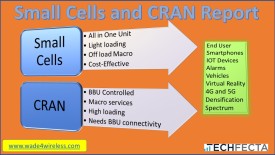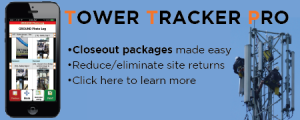This is a question I recently saw on a friend’s post. He gave a talk about private LTE. His point was that you have more options than the CBRS.
If you are planning to deploy private LTE then you have several options. The thing is you could use the ISM band, where you have Wi-Fi. The problem is it’s full of Wi-Fi. There could be issues with that pesky Wi-Fi that is everywhere and on almost every device. That is good and bad. Good if you need instant free broadband connections. Bad if you want dedicated spectrum. So, it may not be the best choice if you’re worried about interference.
If you want a lightly licensed solution, with limited bandwidth but low latency, you can use the CBRS. This is going to be your best choice. You can use it.
For a list of products to support Wade4Wireless, click here!
Would you sign up for a membership site with private content? If so, email me at wade@techfecta.com and write Membership.
I like SpiderCloud and Ruckus as a CBRS OEM. They make good products, and they connect to Federated Wireless for SAS, Spectrum Access System. They all work together to make sure that the private LTE system will work perfectly for your network. I know, this sounds like a sales pitch, but the tools are out there, and these OEMs will help you get around the learning curve. Why not take advantage of their knowledge?
The idea here is that you can figure everything else out. The network is already your strong suit, routers and networking are something you’ve done and will continue to do. So why make the spectrum choice hard? If you use ISM, then you may have to compete with all the Wi-Fi in your building. If you go with CBRS, you have dedicated spectrum in your building.
I was hoping that there would be some mmwave that we could all dip into, I mean something that could be used that is lightly licensed with a ton of spectrum. That may not happen. The FCC does plan to release more spectrum in the ISM band. Sure, you can use 70GHz, 80GHz, and 90GHz, but I was hoping something for the small business in the 24 to 28GHz range. Probably not going to happen since the carriers are willing to pay for that spectrum.
What would you choose?
- ISM band for LTE-U? Cost effective but limited indoor-outdoor coverage areas. Chances are it’s all you need, I mean look at Wi-Fi, it’s good enough for most people.
- The CBRS band? Another cost-effective and somewhat protected indoor and outdoor solution. You have more options here, but maybe not the throughput you need.

- The 70GHz, 80GHz, and 90GHz bands? Cost effective with limitations, outdoor solutions. Weather can be an issue.
You could use any of them, all of them, or none of them. It’s all up to you and the business model you’re building around private LTE.
If you are interested in commenting on the commission’s planning for spectrum above 24GHz, then go to https://www.federalregister.gov/documents/2018/07/20/2018-14806/use-of-spectrum-bands-above-24-ghz-for-mobile-radio-services and read it.’
Comments are welcome, email me at wade4wireless@gmail.com if you want to share some thoughts.
Resources:
- https://www.federalregister.gov/documents/2018/07/20/2018-14806/use-of-spectrum-bands-above-24-ghz-for-mobile-radio-services
- https://www.federatedwireless.com/wp-content/uploads/2017/09/Federated-Wireless-Spectrum-Controller-Datasheet-Sept-2017-Final1.pdf
- https://wade4wireless.com/2017/07/25/art-king-teaches-cbrs/
- https://wade4wireless.com/2017/09/26/building-your-own-private-lte-network/
- https://wade4wireless.com/2017/07/31/cbrs-deep-dive-with-steve-martin/
- https://www.lightreading.com/mobile/spectrum/federated-wireless-sets-plan-for-massive-cbrs-band-deployment-/d/d-id/745937?_mc=RSS_LR_EDT
- https://www.federatedwireless.com/tag/cbrs/

- https://www.fcc.gov/document/fcc-establishes-procedures-first-5g-spectrum-auctions-0
- https://www.lexology.com/library/detail.aspx?g=bcdcd63a-7161-410f-bee0-08cfa11833f0
- http://www.5gamericas.org/files/8514/7578/0856/5G_Americas_final_14-177_FNPRM_Comments.pdf
Thank you for your support and your time. And good job on learning all you can in the wireless industry, you are amazing! Now, go out and impress people!
Would you sign up for a membership site with private content? If so, email me at wade@techfecta.com and write Membership.
Do you want an occasional email with free PDFs of these reports along with book and training offers? Read posts like these offline!
Be smart, be safe, and pay attention!
See Ya!
More products from TechFecta and Wade4Wireless that support WADE!
The foundations below do beautiful work, spreading love when all seems lost.
Climbers can get seriously injured and/or die on the job. Support the workers who build and install the wireless systems!
Together we can honor and remember the fallen in our wireless family.






 Putting together your smart city tech solutions, planning, development, and more…TechFecta! Guiding you to a better plan through consulting!
Putting together your smart city tech solutions, planning, development, and more…TechFecta! Guiding you to a better plan through consulting!










